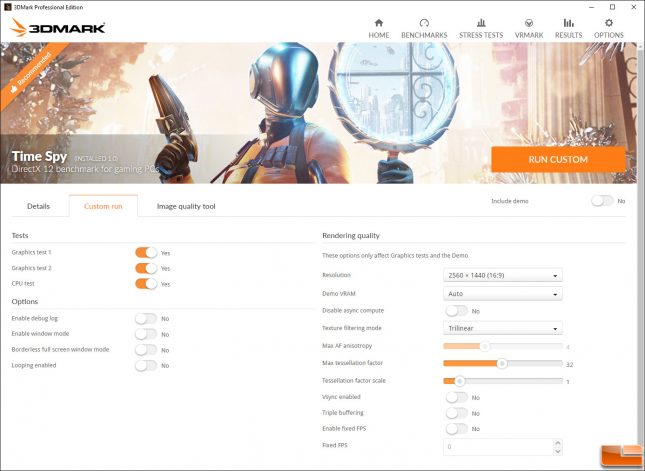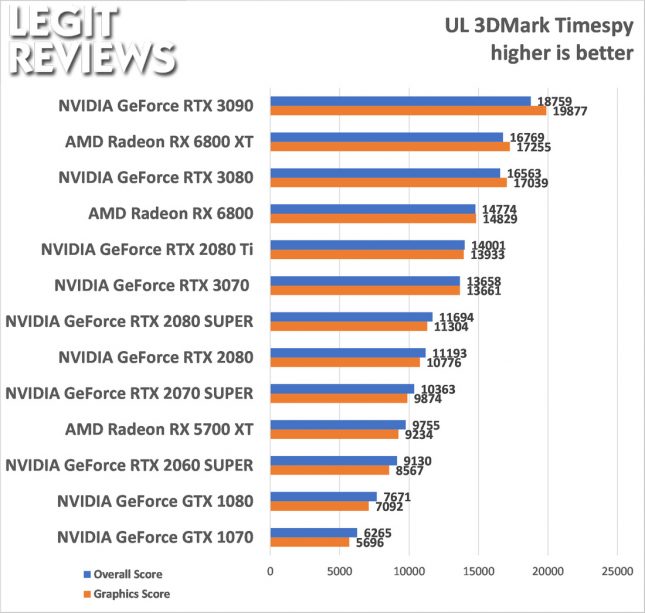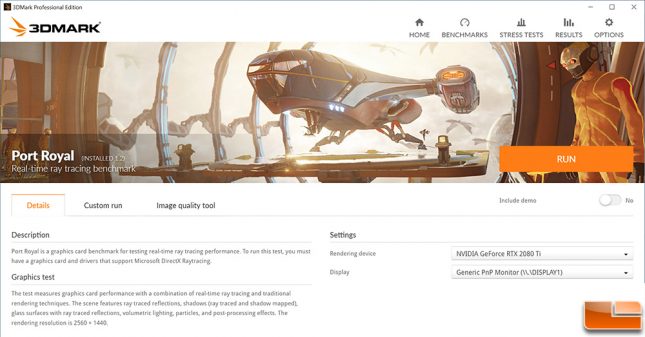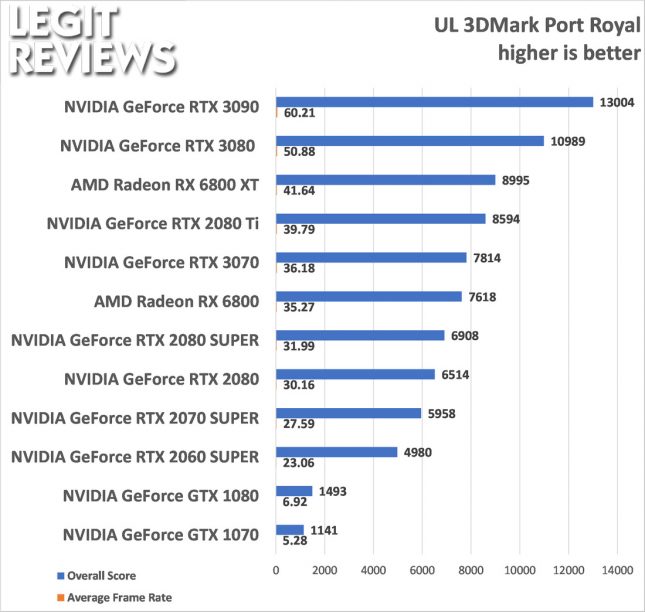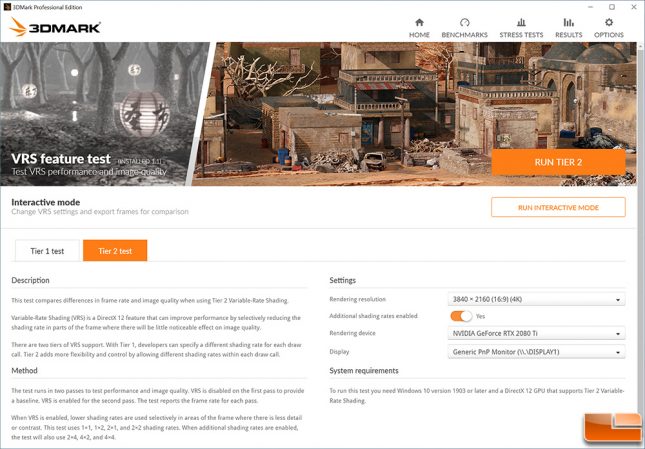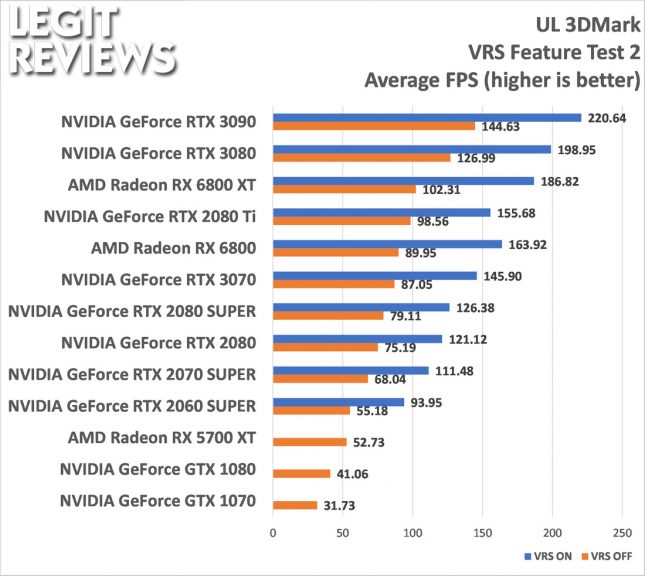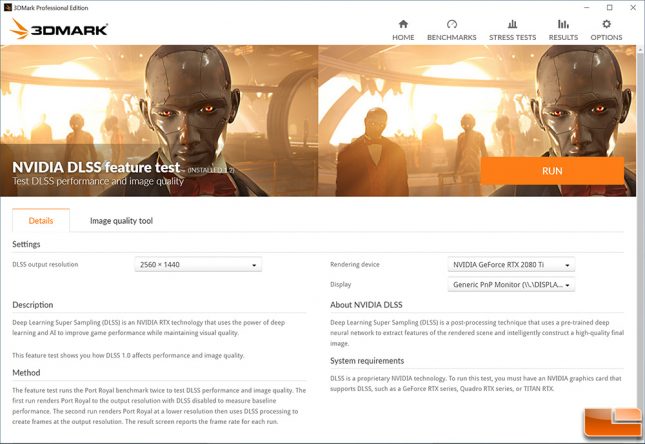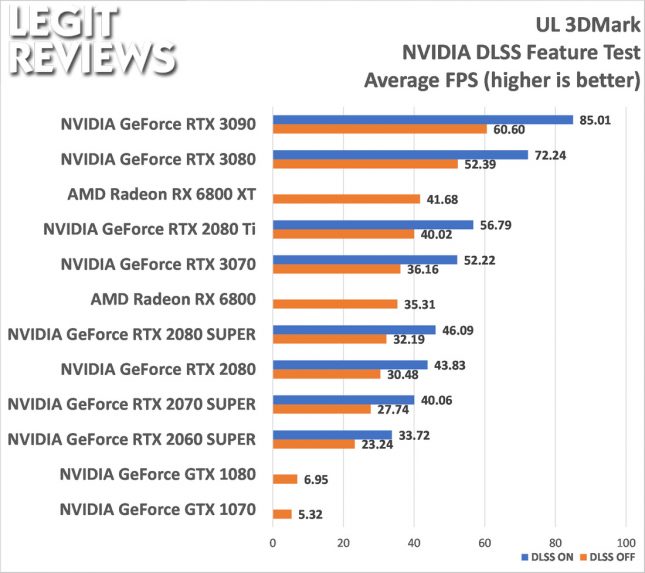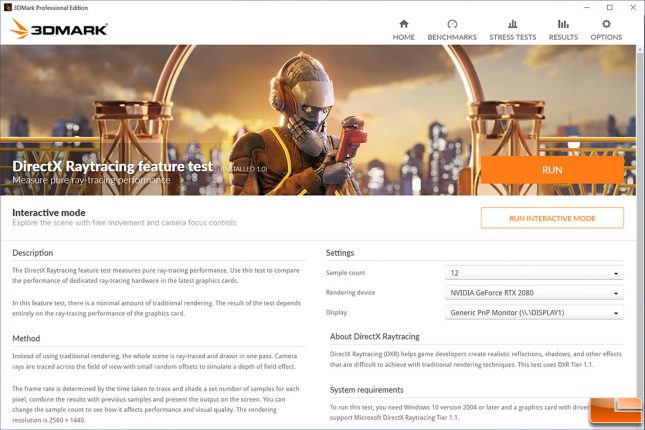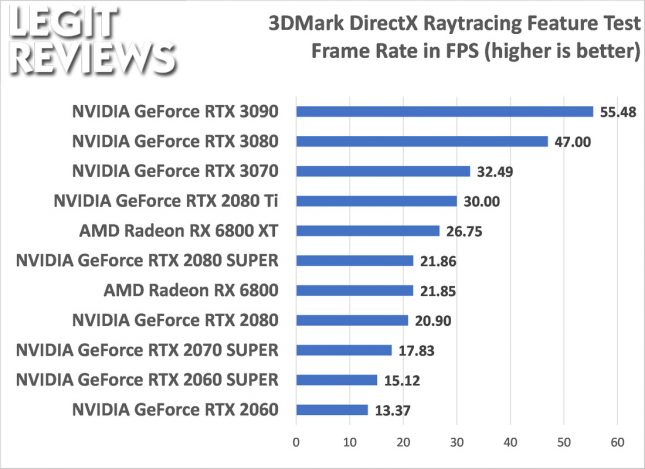AMD Radeon RX 6800 XT and Radeon RX 6800 Review
3DMark Tests Galore!
3DMark Time Spy has been our primary DirectX 12 benchmark test for gaming PCs running Windows 10 for years. This DirectX 12 Feature Level 11_0 benchmark utilizes a pure DirectX 12 game engine that supports features like asynchronous compute, explicit multi-adapter, and multi-threading! The developers opted to use DirectX 12 Feature Level 11_0 to ensure wide compatibility with DirectX 11 hardware through DirectX 12 drivers.
3DMark Time Spy
We ran 3DMark Time Spy with the standard settings and got the following results:
3DMark Time Spy shows the GeForce RTX 2080 Ti was about 1% faster than the new RTX 3070, which is basically a wash in our eyes.
3DMark Port Royal
3DMark Port Royal entered the market in 2019 as the worlds first dedicated real-time ray tracing benchmark for gamers. We’ve never included this benchmark before, but now that NVIDIA has more than one generation of cards on the market that have hardware support for real-time ray tracing performance, it was time to include it in our testing. We ran the default test without the demo.
The results were impressive as the NVIDIA GeForce RTX 3070 was 10% slower than the GeForce RTX 2080 Ti and 31% faster than the GeForce RTX 2070 SUPER in Port Royal!
3DMark VRS Feature Test
The Variable-Rate Shading (VRS) Benchmark feature test in 3DMark got updated at the end of 2019 and now includes a Tier 2. Tier 2 adds more flexibility and control by allowing different shading rates within each draw call. Right now this test will only run on NVIDIA Turing and Ampere GPUs.
The AMD Radeon RX 6800 XT performs between the GeForce RTX 3080 and GeForce RTX 2080 Ti cards
NVIDIA DLSS Feature Test
Another new benchmark added by UL to 3DMark in 2019 was the NVIDIA DLSS feature test. This new test helps you compare performance and image quality with and without DLSS processing. The test is based on the 3DMark Port Royal ray tracing benchmark that uses Temporal Anti-Aliasing. TAA usage can result in blurring and the loss of fine detail and that can be regained by the NVIDIA RTX technology called DLSS (Deep Learning Super Sampling). DLSS uses deep learning and AI to improve game performance while maintaining visual quality.
DLSS obviously doesn’t work on AMD Radeon RX 6800 series graphics cards, but you can at least look and see what the ‘DLSS OFF’ performance looks like.
3DMark DirectX Raytracing Feature Test
This is one of the first synthetic benchmarks that has been developed to compare the performance of the dedicated ray-tracing hardware capabilities in graphics cards. The 3DMark DirectX Raytracing feature test was designed to make ray-tracing performance the limiting factor.
Instead of relying on traditional rendering techniques, the whole scene is ray-traced and drawn in one pass. This test uses features from DirectX Raytracing Tier 1.1 to create a realistic ray-traced depth of field effects and the rendering resolution is 2560 1440. Camera rays are randomized with per-pixel offsets. There are 12 samples for each pixel when running the test with default settings. We left the test at its default settings for our benchmarking.
This benchmark has the AMD Radeon RX 6800 XT performing between the GeForce RTX 2080 Ti and the 2080 SUPER cards. The AMD Radeon RX 6800 is preforming on par with the GeForce RTX 2080 SUPER card and ahead of the original GeForce RTX 2080.

